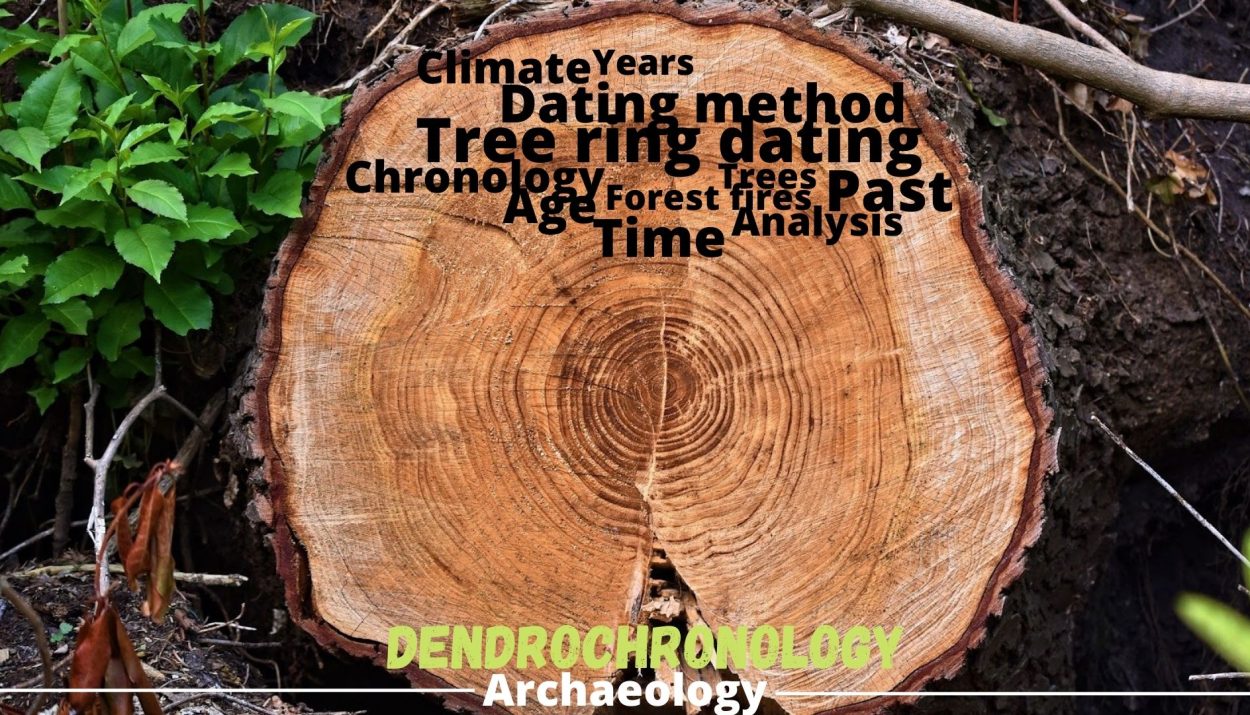Dendrochronology is also called Tree Ring Dating. It was developed by American astronomer Andrew Ellicott Douglass.
Dendrochronology is a term derived from Greek words- dendron meaning ‘tree’, Khronos meaning ‘time’ and -logia meaning ‘the study of’. Dendrochronology is the study of trees over time. It is the science of tree rings.
According to the Cambridge Dictionary-
Dendrochronology is a way of calculating dates and the age of objects by counting the rings that appear inside tree trunks.
A Tree ring is one of the rings that you see in a tree trunk (=centre part) if you cut through it. Each tree ring shows one year’s growth.
Dendrochronology helps in dating archaeological finds. It is one of the reliable sources of dating methods.
Applications of Dendrochronology
It has applications in diverse fields like archaeology, chemistry, climate science, geology, history, forestry and natural resource management.
Dendrochronology involves dating tree rings or growth rings to their year of formation and then analyzing the resulting data. It is a natural record of past climate.
Tree rings go from the centre to the edge of the tree trunk. The innermost ring is the oldest while the ring next to the edge is the newest one. Each of the rings represents one year in the life of the tree. So by counting the rings one can find the age of the tree and for counting the rings there is no need to cut the tree trunk.
If we find co-relations between the edge rings of one tree and the centre rings of another, we can calculate the past time just by cross-referencing with similar ring patterns. We have a such difference in tree ring pattern because of the different environment present around the world and the surrounding environment play an important role in tree growth.
Dendrochronology is used for dating cultural heritage that is made of wood. For example- paintings on wooden panels, musical instruments and shipwrecks.
Dendrochronologists study very old trees to learn about the past environment, climate, rainfall, insects outbreak, fires and other environmental hazards that happened in the surrounding area. They answer questions like- Are some species superior to others? Are some species more sensitive toward climate change? etc.
Limitations of Dendrochronology
Most of the variables that affect tree growth and health like wind, soil properties, sunlight availability, temperature, moisture, fire, disease, winters, rainfall etc. These all change the pattern of tree ring growth.
This technique is applied only to wooden objects. It can be used in those places where rainfall is seasonal and the growth of annual tree rings is regular.
Conclusion
Forests act as a natural library and trees are like books. They store information about the past. Through the use of dendrochronology, we can find some of the mysteries that trees hide and learn about their past to be prepared for the future.
We can learn a lot about wooden objects through dendrochronology.
References-
Chronological Methods 7 – Dendrochronology
